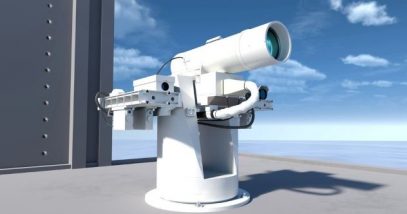 Space
Space  Space
Space  Weird Stuff
Weird Stuff 10 Crazy News Stories No One Expected to Read in 2025
 Crime
Crime 10 Bizarre Cases of Killer Seniors
 Technology
Technology 10 Signs That “Made in the U.S.A.” Still Lives
 Music
Music Top 10 Songs That Tell Stories Better Than Books
 Humans
Humans 10 Ways News Media Manipulate Readers
 Weird Stuff
Weird Stuff 10 Crazy-Specific Rules Dallas Cowboys Cheerleaders Must Follow
 Pop Culture
Pop Culture 10 Reasons We’ll Always Need Superman
 Our World
Our World 10 Ancient Places That Dropped Surprising New Finds
 Animals
Animals Ten Mind-Boggling Discoveries About Birds
 Space
Space 10 of the Weirdest Ways the Universe Works
 Weird Stuff
Weird Stuff 10 Crazy News Stories No One Expected to Read in 2025
 Crime
Crime 10 Bizarre Cases of Killer Seniors
Who's Behind Listverse?

Jamie Frater
Head Editor
Jamie founded Listverse due to an insatiable desire to share fascinating, obscure, and bizarre facts. He has been a guest speaker on numerous national radio and television stations and is a five time published author.
More About Us Technology
Technology 10 Signs That “Made in the U.S.A.” Still Lives
 Music
Music Top 10 Songs That Tell Stories Better Than Books
 Humans
Humans 10 Ways News Media Manipulate Readers
 Weird Stuff
Weird Stuff 10 Crazy-Specific Rules Dallas Cowboys Cheerleaders Must Follow
 Pop Culture
Pop Culture 10 Reasons We’ll Always Need Superman
 Our World
Our World 10 Ancient Places That Dropped Surprising New Finds
 Animals
Animals Ten Mind-Boggling Discoveries About Birds
Science
Random List
 Space
Space 10 of the Weirdest Ways the Universe Works
 Technology
Technology 10 Signs That “Made in the U.S.A.” Still Lives
 Humans
Humans 10 Ways News Media Manipulate Readers
 Our World
Our World 10 Ancient Places That Dropped Surprising New Finds
 Animals
Animals Ten Mind-Boggling Discoveries About Birds
 Technology
Technology 10 Animal Adaptations Revolutionizing Human Technology
 Humans
Humans 10 Darkest Details of the Infamous Lobotomy
 Technology
Technology 10 Declassified Military Technologies That Sound Like Sci-Fi
 Humans
Humans 10 Times Seasoned Professionals Lost Their Composure
 Technology
Technology 10 Weird but Useful New Jobs for AI Technology
 Animals
Animals Ten Bizarre New Facts About Animals
Editor’s Picks
 Movies and TV
Movies and TV 10 Psychiatric Diagnoses Of Horror Villains And Their Victims
 Movies and TV
Movies and TV 10 Greatest Movie MacGuffins Of All Time
 Movies and TV
Movies and TV 10 Iconic Movie And TV Restaurants That Are Actually Real
 Movies and TV
Movies and TV